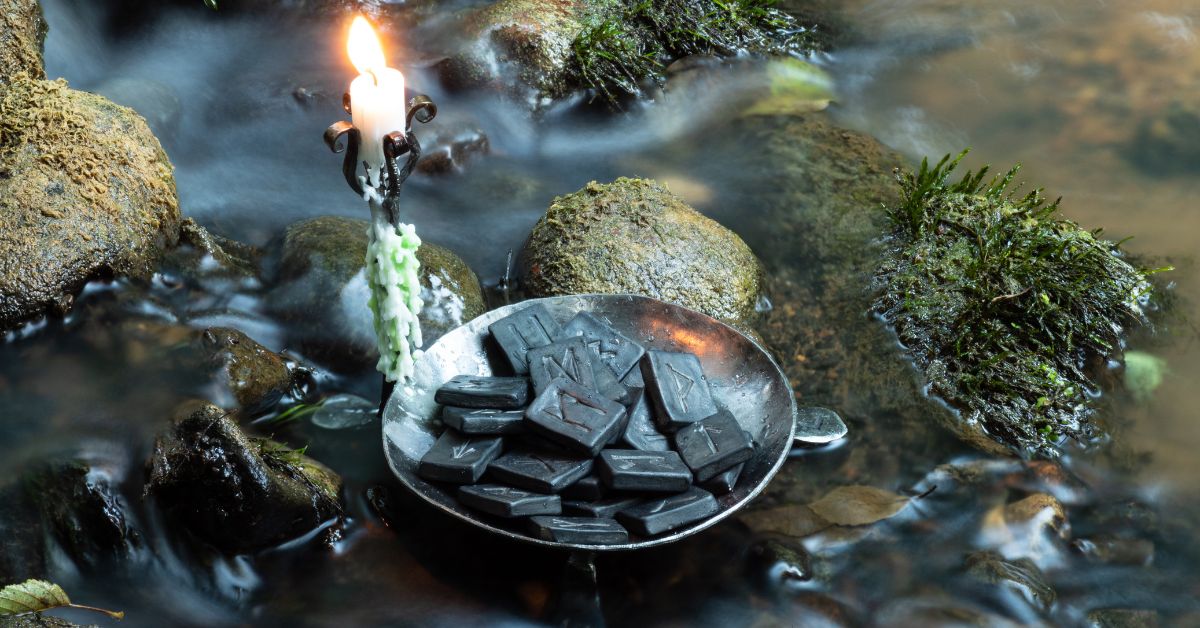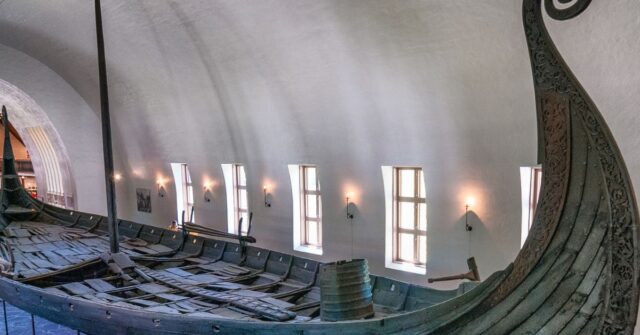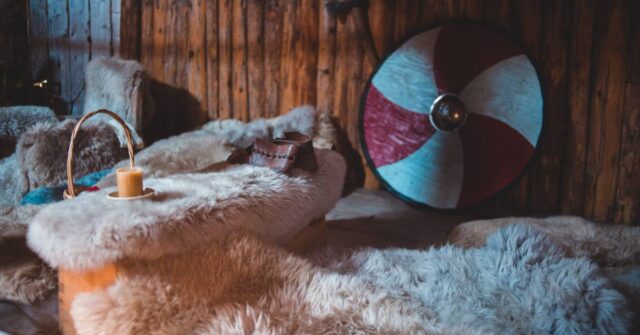Imagine unfurling the dusty scrolls of history, only to find the ancient beliefs of the Norse not just surviving but thriving in the modern age.
This isn’t a tale from the sagas; it’s the reality of Asatru and Heathenry’s revival. A journey through time, belief, and community awaits, inviting us to explore how ancient gods are finding new altars in our world.
Introduction to Norse Religion
Before we sail into the heart of the revival, let’s anchor our ship at the origins.
Norse religion, with its pantheon of gods, goddesses, and an array of mythical creatures, was the spiritual backbone of the Viking Age Scandinavians.
But it was more than just worship; it was a lens through which they viewed the entire cosmos.
Origins and Historical Overview
Our saga begins in the misty realms of prehistoric Scandinavia, where Norse religion took root.
Unlike the organized religions of today, it was a polytheistic and animistic faith, deeply intertwined with the daily lives and natural surroundings of its followers.
From Odin, the Allfather, to Freyja, the goddess of love and war, the deities of Norse mythology reflected the multifaceted aspects of life and nature.
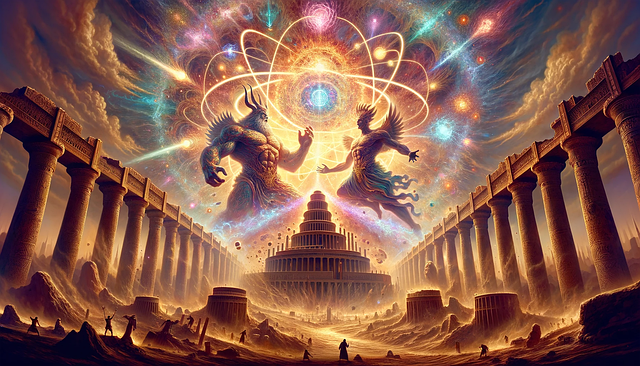

Core Beliefs and Deities
The Norse cosmos was a complex web of realms and beings, with Yggdrasil, the world tree, at its center. Gods and humans lived in a dynamic world where fate (orðr) and honor were paramount.
The Eddas and sagas, our main sources, offer a window into this vibrant belief system, revealing a world where gods mingled with mortals and magic was a part of everyday life.
The Eddas and Sagas: Primary Sources
The Poetic Edda and the Prose Edda, along with various sagas, are our primary windows into the Norse world.
Written in Iceland in the 13th century, these texts are a mix of myth, legend, and history, offering rich narratives about the gods, their exploits, and the heroic deeds of humans.
They are not just stories, but a tapestry of beliefs, values, and cultural insights.
The Decline of Norse Religion
But all was not to remain in the realm of the gods. The winds of change, carrying the cross, swept through Scandinavia.
The conversion to Christianity marked the beginning of the end for the old ways, but not entirely. Let’s explore how Norse religion’s flame was dimmed but never extinguished.
Conversion to Christianity
The transition was neither swift nor peaceful. Kings and chieftains, influenced by political and economic gains, adopted the new faith, often imposing it on their people.
Yet, the old gods did not fade quietly into the night; elements of the old faith persisted, woven into the fabric of folk traditions and lore.
The Impact of Christianization on Norse Culture
Christianization transformed Norse society, but it was a complex process of assimilation and resistance.
Norse mythology and cultural practices were reinterpreted through a Christian lens, while elements of the old religion subtly survived in festivals, folklore, and even in Christian rites.
What is Asatru?
As we journey from the past into the present, we encounter Asatru, the modern incarnation of Norse paganism. But what exactly does this term mean, and how does it reflect the ancient beliefs?


Definition and Beliefs
Asatru, literally “faith in the Aesir,” is a contemporary revival of the old Norse religion, focusing on the worship of the Norse gods and the practice of ancient rituals and ethics.
It is a path that seeks to reconnect with the spiritual heritage of the Norse people, emphasizing honor, community, and the connection to nature.
The Role of Rituals and Blots
In Asatru, rituals (or blots) are vital, serving as the means to honor the gods, ancestors, and the land.
These ceremonies range from simple offerings to elaborate feasts, each with its own significance and symbolism, echoing the communal and celebratory aspects of ancient Norse worship.
Asatru Today: Practices and Communities
Today, Asatru is a vibrant and growing movement, with communities and kindreds across the globe.
Through festivals, study groups, and social media, practitioners share knowledge, celebrate, and continue the traditions of their ancestors in a modern context.
What is Heathenry?
Parallel to Asatru, Heathenry offers another path to those drawn to the Norse gods. While sharing many similarities with Asatru, Heathenry has its own nuances and flavors. Let’s delve into what sets it apart.
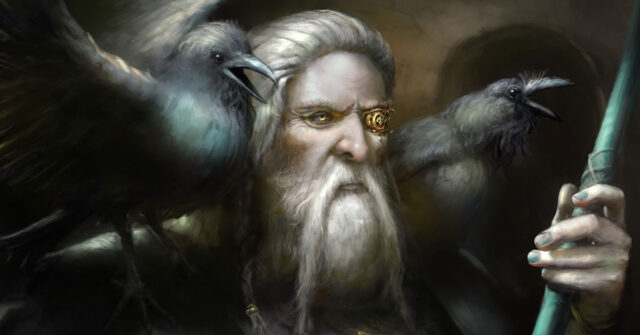

Heathenry vs. Asatru: Similarities and Differences
While both paths worship the Norse gods and value ancient traditions, Heathenry often places greater emphasis on local customs and the ancestral veneration.
The distinction is not rigid, and many find their path between these labels, united by a reverence for the Norse past.
The Importance of Ancestry and Locale
For Heathens, the connection to one’s ancestors and the land they walk on is paramount.
This bond informs their practices and beliefs, grounding their spirituality in the here and now while reaching back through the mists of time.
Modern Heathen Practices
Modern Heathenry is a tapestry of old and new, where ancient rituals meet contemporary needs.
From the solitary practitioner to communal gatherings, Heathens find strength in the old ways, adapting them to modern life while keeping the spirit of the Norse world alive.
The Revival of Norse Religion
The phoenix rises — Norse religion, once thought relegated to history, is reborn in Asatru and Heathenry. But what sparked this revival, and how has it flourished in our times?


The 20th Century and Beyond
The revival began in earnest in the mid-20th century, fueled by a desire to reconnect with pre-Christian spiritual roots.
It was a response to a world looking for meaning beyond the material, a yearning for connection with nature, community, and ancient wisdom.
Influential Movements and Figures
Key figures and movements have shaped the revival, each contributing their vision and interpretation of the ancient faith.
From scholarly research to spiritual practice, these pioneers have laid the foundations for a diverse and growing community.
The Role of the Internet and Social Media
In our digital age, the internet has been a boon for the revival, connecting practitioners across continents, facilitating the exchange of ideas, and fostering communities.
Social media platforms, forums, and online resources have made the Norse path accessible to seekers worldwide.
Cultural and Societal Impact
The revival of Norse religion is not happening in a vacuum. It influences and is influenced by broader cultural and societal trends. Let’s explore this dynamic interplay.
Inclusion and Diversity within Asatru and Heathenry
The modern practice of Norse religion is marked by a commitment to inclusivity and diversity.
Communities are welcoming spaces for people of all backgrounds, reflecting a contemporary understanding of unity and respect amidst diversity.
Controversies and Misunderstandings
Yet, the path is not without its thorns. Misunderstandings and controversies, often stemming from misappropriation or historical baggage, challenge the community.
Navigating these waters requires wisdom and a commitment to the true spirit of the faith.
The Role of Norse Religion in Modern Culture
Norse mythology and symbols permeate modern culture, from literature and movies to video games.
This cultural fascination provides a gateway for many to explore the deeper aspects of Norse religion, sparking interest and sometimes controversy.
Legal Recognition and Rights
As Norse religion gains followers, the question of legal recognition and rights comes to the fore. How do modern nations accommodate these ancient paths within their legal frameworks?
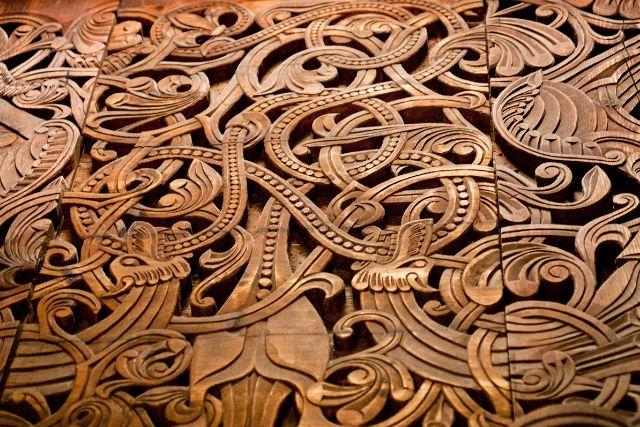

Asatru and Heathenry Around the World
In countries like Iceland, Norway, and the United States, Asatru and Heathen groups have gained legal recognition, marking a significant milestone for the community.
This recognition is not just symbolic; it affords these religious communities rights and respect akin to more established faiths.
Challenges and Achievements
The road to recognition is fraught with challenges, from bureaucratic hurdles to societal misconceptions.
Yet, the achievements of these communities in gaining recognition and fostering understanding highlight the resilience and relevance of Norse religion today.
Future of Norse Religion
As we gaze into the runes of the future, what does the revival of Norse religion hold? Is it a fleeting fascination, or does it signal a deeper, more enduring shift in spiritual landscapes?
Growth Trends and Predictions
The revival shows no signs of waning. With each passing year, more people are drawn to its rich tapestry of beliefs, community, and connection to the ancient world.
As society evolves, so too does the practice of Norse religion, promising a vibrant future.
Preservation of Tradition vs. Adaptation
The balance between preserving ancient traditions and adapting to modern needs is at the heart of the revival.
This dynamic tension is a source of strength, ensuring that Norse religion remains a living, breathing tradition that continues to inspire and guide.
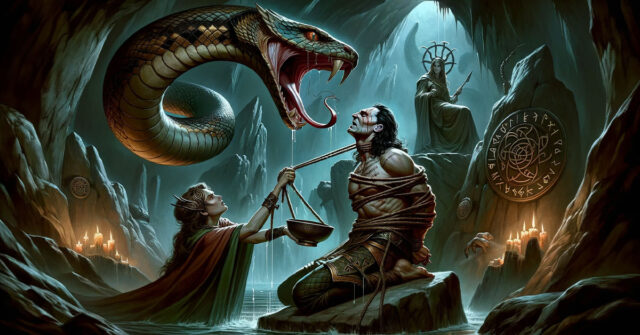

The Global Impact of Revived Norse Beliefs
The revival of Norse religion is more than a resurgence; it’s a testament to the enduring power of these ancient beliefs to speak to the human spirit across ages and cultures.
Its global impact is a bridge between past and present, inviting us to explore the depth of our connections to the divine, the natural world, and each other.
Conclusion
From the echoes of ancient halls to the screens of the digital age, the revival of Norse religion stands as a remarkable journey of faith, community, and cultural reawakening.
Asatru and Heathenry are not mere relics of the past but vibrant paths that continue to evolve, offering wisdom, connection, and a touch of the divine in our modern world.
May the gods watch over your path, wherever it may lead.

